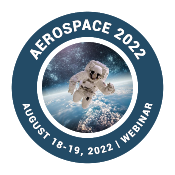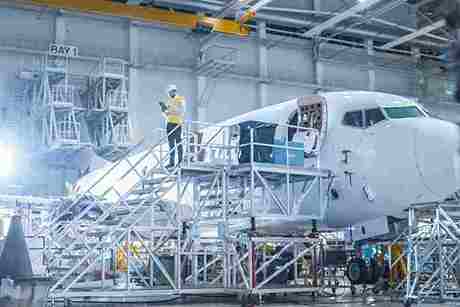Aerospace Engineering
Aerospace Engineering is the branch of engineering that deals with the design and development of Airplane and Spacecraft. Aeronautical Engineering and Astronautical Engineering are two important fields that overlap. Avionics Engineering is related to aerospace engineering, except it focuses on the electronics side of things. It covers the science and technology of Airplanes and spacecrafts, as well as their research, design, development, construction, testing, and collaboration procedures. It entails the investigation of the science and engineering that underpins the physical qualities of rockets, planes, and spacecraft. This is a complicated subject that necessitates the use of advanced and sophisticated technologies. Aerospace Engineers also work on new technology development in aviation, space exploration, and defence systems. Aerospace Engineers work on everything from planes to space shuttles to satellites to missiles. They require sophisticated math and physics skills. One of the most difficult technical fields is Aerospace Engineering. Engineers must test aircraft for safety in addition to developing and engineering them.
There are two key fields in Aerospace Engineering:
• Aeronautical Engineering: This field deals with aero planes that fly through the Earth's atmosphere.
• Astronautical Engineering: This field deals with spacecraft that operate outside of Earth's atmosphere.
Roles of Aerospace Engineer:
• An Aerospace Engineer is in charge of directing and organizing the design of aircrafts and aerospace products, as well as producing and testing them.
• Aerospace Engineers make sure that the project on which they are working shall result in safe aircrafts and their parts.
• Aerospace Engineers check faulty or damaged items in order to identify the sources of faults and recommend feasible fixes.
• Aerospace engineers are in charge of overseeing the building of aircraft, as well as the installation of engines, instruments, and other equipment.
• They must take part in flight test programmers to determine rate of ascent, stall speeds, take-off lengths, and landing capabilities.
Related Conference of Aerospace Engineering
6th International Conference on Aerospace, Defense and Mechanical Engineering
7th Annual Summit on Satellite and Space Communication Technology
14th Global Summit on Artificial Intelligence and Neural Networks
12th International Conference and Exhibition on Mechanical & Aerospace Engineering
Aerospace Engineering Conference Speakers
Recommended Sessions
- Advanced Tactical Airborne Reconnaissance System (ATARS)
- Aerodynamics
- Aerospace Engineering
- Aerothermodynamics and Propulsion
- Applications of Aerospace Technology
- Aviation Communication
- Avionics and Mission Technologies
- Engineering Mathematics
- Fluid Mechanics
- Intelligence, Surveillance, Target Acquisition and Reconnaissance (ISTAR)
- Robotics and Rotorcraft
- Space Dynamics
- Spacecraft and Space Engineering
- Turbomachinery
- Wind Tunnel Testing
Related Journals
Are you interested in
- 5G and Beyond: Innovations & Challenges - Euro Satcomm 2025 (France)
- 5G/6G Integration and Beyond - Satellite-2025 (Netherlands)
- 6G Wireless Systems and Emerging Standards - Euro Satcomm 2025 (France)
- Advanced RF and Microwave Engineering in Space Systems - Satellite-2025 (Netherlands)
- Advancements in Predictive Analytics - ARTIFICIAL INTELLIGENCE MEET 2026 (Singapore)
- Aerospace Communication Technologies - Euro Satcomm 2025 (France)
- AI Ethics - ARTIFICIAL INTELLIGENCE MEET 2026 (Singapore)
- AI for Cybersecurity - ARTIFICIAL INTELLIGENCE MEET 2026 (Singapore)
- AI in Healthcare - ARTIFICIAL INTELLIGENCE MEET 2026 (Singapore)
- AI, Automation, and Autonomous Space Operations - Satellite-2025 (Netherlands)
- AI-Driven Network Optimization - Euro Satcomm 2025 (France)
- AI-Driven Sustainability & Climate Intelligence - ARTIFICIAL INTELLIGENCE MEET 2026 (Singapore)
- Ambient Intelligence - ARTIFICIAL INTELLIGENCE MEET 2026 (Singapore)
- Artificial Intelligence in Gaming - ARTIFICIAL INTELLIGENCE MEET 2026 (Singapore)
- Artificial Intelligence in Music - ARTIFICIAL INTELLIGENCE MEET 2026 (Singapore)
- Artificial Neural Networks - ARTIFICIAL INTELLIGENCE MEET 2026 (Singapore)
- Bioinformatics - ARTIFICIAL INTELLIGENCE MEET 2026 (Singapore)
- Biometrics - ARTIFICIAL INTELLIGENCE MEET 2026 (Singapore)
- Cloud Computing - ARTIFICIAL INTELLIGENCE MEET 2026 (Singapore)
- Cognitive Radio and Spectrum Sharing - Euro Satcomm 2025 (France)
- Commercialization and Private Space Industry Involvement - Satellite-2025 (Netherlands)
- Convolutional Neural Network Model - ARTIFICIAL INTELLIGENCE MEET 2026 (Singapore)
- Cybersecurity and Space Traffic Management - Satellite-2025 (Netherlands)
- Deep Learning - ARTIFICIAL INTELLIGENCE MEET 2026 (Singapore)
- Digital Avatars - ARTIFICIAL INTELLIGENCE MEET 2026 (Singapore)
- Earth Observation and Remote Sensing Applications - Satellite-2025 (Netherlands)
- Emergency Communication and Disaster Response Networks - Euro Satcomm 2025 (France)
- Global Collaboration and Space Policy - Satellite-2025 (Netherlands)
- Green Wireless Technologies and Sustainable Networks - Euro Satcomm 2025 (France)
- Ground Station Infrastructure and Network Optimization - Satellite-2025 (Netherlands)
- High-Capacity Satellite Internet and Global Broadband Infrastructure - Satellite-2025 (Netherlands)
- Human-Centered AI & Cognitive Computing - ARTIFICIAL INTELLIGENCE MEET 2026 (Singapore)
- Inter-Satellite and Deep Space Communication - Satellite-2025 (Netherlands)
- Internet of Space (IoS) and Inter-Satellite Links - Euro Satcomm 2025 (France)
- Interplanetary Internet and Delay-Tolerant Networking (DTN) - Satellite-2025 (Netherlands)
- IoT and Wireless Sensor Networks - Euro Satcomm 2025 (France)
- Low Earth Orbit (LEO) Satellite Networks - Euro Satcomm 2025 (France)
- Machine Learning - ARTIFICIAL INTELLIGENCE MEET 2026 (Singapore)
- Machine Learning in Wireless Networks - Euro Satcomm 2025 (France)
- Millimeter Wave and Terahertz Communications - Euro Satcomm 2025 (France)
- MIMO Systems and Beam forming Techniques - Euro Satcomm 2025 (France)
- Mobile and Cellular Network Technologies - Euro Satcomm 2025 (France)
- Natural Language Processing - ARTIFICIAL INTELLIGENCE MEET 2026 (Singapore)
- Next-Generation Satellite Systems and Architectures - Satellite-2025 (Netherlands)
- Next-Generation Wireless Communication Technologies - Euro Satcomm 2025 (France)
- Optical Wireless Communication (OWC) - Euro Satcomm 2025 (France)
- Orbital Sustainability and In-Orbit Servicing (IOS) - Satellite-2025 (Netherlands)
- Photonics and Optical Satellite Communication Systems - Satellite-2025 (Netherlands)
- Policy, Regulations, and Space Law - Satellite-2025 (Netherlands)
- Quantum Communication and Cryptography - Euro Satcomm 2025 (France)
- Quantum Communication via Satellite Networks - Satellite-2025 (Netherlands)
- RF Engineering and Microwave Systems - Euro Satcomm 2025 (France)
- Robotics and Mechatronics - ARTIFICIAL INTELLIGENCE MEET 2026 (Singapore)
- Satellite Broadcasting and Multimedia Services - Euro Satcomm 2025 (France)
- Satellite Communication Systems and Applications - Euro Satcomm 2025 (France)
- Satellite Internet and Rural Connectivity - Euro Satcomm 2025 (France)
- Satellite Navigation and GPS Technologies - Euro Satcomm 2025 (France)
- Satellite Remote Sensing - Satellite-2025 (Netherlands)
- Satellite Remote Sensing Data - Satellite-2025 (Netherlands)
- Satellite-Based Earth Observation and Remote Sensing - Euro Satcomm 2025 (France)
- Satellite-Ground Station Integration and Management - Euro Satcomm 2025 (France)
- Self-Organizing Neural Networks - ARTIFICIAL INTELLIGENCE MEET 2026 (Singapore)
- Space-Based AI/ML for Earth Intelligence and Autonomous Decision-Making - Satellite-2025 (Netherlands)
- Telecommunication Infrastructure and Cloud Integration - Euro Satcomm 2025 (France)
- The Next Generation of Artificial Intelligence - ARTIFICIAL INTELLIGENCE MEET 2026 (Singapore)
- Underwater Wireless Communication - Euro Satcomm 2025 (France)
- Vehicular Ad-Hoc Networks (VANETs) - Euro Satcomm 2025 (France)
- Web-based Training Environment - ARTIFICIAL INTELLIGENCE MEET 2026 (Singapore)
- Wireless Communication for Smart Cities - Euro Satcomm 2025 (France)
- Wireless Network Security and Privacy - Euro Satcomm 2025 (France)
- Wireless Power Transmission and Energy Harvesting - Euro Satcomm 2025 (France)


